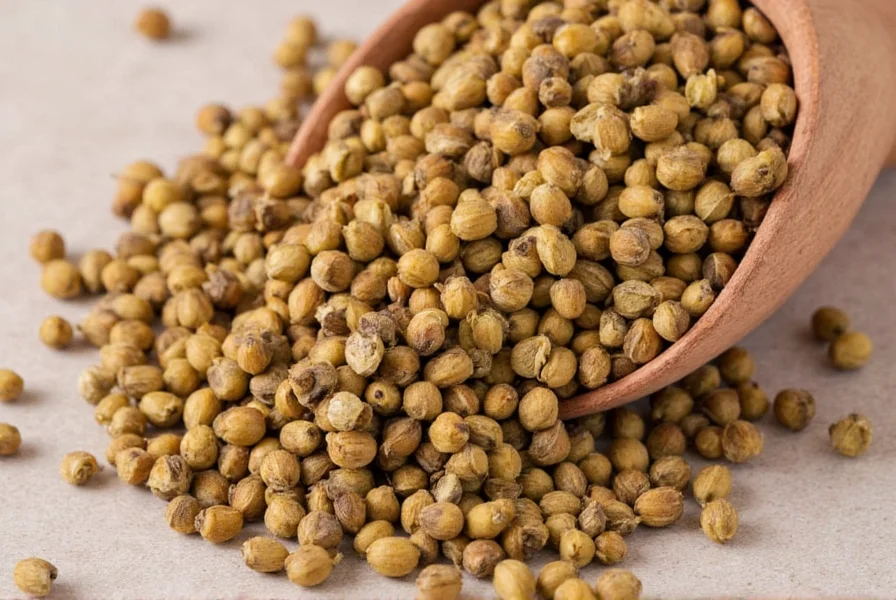Cardamom, often called the \"queen of spices,\" adds distinctive citrusy, floral notes to both sweet and savory dishes across Middle Eastern, Indian, and Scandinavian cuisines. Whether you're baking Scandinavian lussekatter, preparing Indian biryani, or crafting Middle Eastern gahwa coffee, knowing where to source quality cardamom makes all the difference in your culinary creations.
Understanding Cardamom Varieties Before You Buy
Before searching for where to buy cardamom, understand the main varieties you'll encounter:
- Green cardamom (Elettaria cardamomum) - The most common variety with a delicate, citrusy flavor. Look for this in most grocery stores.
- Black cardamom (Amomum subulatum) - Larger, smokier pods primarily used in Indian and Nepalese cuisine.
- Ground vs. whole pods - Whole pods retain flavor significantly longer than pre-ground versions.
For optimal flavor, always choose whole pods when possible and grind them yourself just before use. This preserves the essential oils that give cardamom its distinctive aroma and taste.
Physical Retail Locations for Cardamom
Major Grocery Chains
Nearly all major supermarket chains carry cardamom in their spice sections. Stores like Kroger, Albertsons, Target, and Walmart typically stock both whole green cardamom pods and ground cardamom in standard spice jars. While convenient, these options often have less intense flavor due to longer shelf time. Check expiration dates and look for plump, green pods rather than faded or brownish ones.
Ethnic and International Markets
For superior quality and freshness, visit specialized markets:
| Market Type | Cardamom Quality | Price Range | What to Ask For |
|---|---|---|---|
| Middle Eastern Markets | Excellent (fresh pods) | Moderate | \"Hail\" or \"Hilu\" (green cardamom) |
| Indian Grocery Stores | Very good (often bulk) | Economical | \"Elaichi\" (green) or \"Badi Elaichi\" (black) |
| Scandinavian Specialty Shops | Premium (often organic) | Higher | \"Kardemummia\" |
| Latin American Markets | Good (sometimes) | Moderate | \"Cardamomo\" |
Ethnic markets typically offer cardamom in bulk bins, allowing you to inspect the pods' color and aroma before purchasing. The turnover rate is usually higher, meaning fresher product. Don't hesitate to ask store staff for their freshest batch—they often keep premium stock behind the counter.
Specialty Food and Spice Shops
Dedicated spice shops like Penzeys Spices, The Spice House, or local gourmet markets provide the highest quality cardamom. These retailers frequently source directly from growers and maintain strict freshness standards. While prices may be higher, the flavor intensity justifies the cost for serious cooks. Many offer samples so you can verify quality before purchasing.

Online Retailers for Quality Cardamom
Major Online Marketplaces
Amazon, Walmart.com, and Target.com offer convenient cardamom purchasing with home delivery. When buying cardamom online through these platforms, pay close attention to:
- Seller ratings and reviews (minimum 4-star average)
- "Sold by" information (preferably the brand itself or authorized retailer)
- Harvest or packaging dates (recent is better)
- Storage conditions mentioned (cool, dark place)
Search specifically for where to buy organic cardamom online if that's your preference, as many standard listings may not specify organic status.
Specialty Spice Retailers Online
For where to buy premium cardamom online, consider these dedicated spice merchants:
- Spice Jungle - Offers both green and black cardamom with detailed origin information
- The Spice House - Known for freshness guarantees and bulk purchasing options
- Penzeys Spices - Provides detailed flavor profiles and usage suggestions
- Frontier Co-op - Excellent organic options with transparent sourcing
These specialty retailers typically provide harvest dates, origin details, and storage instructions—critical information for where to find the best cardamom available. Many offer subscription options for regular purchasers.
What to Look for When Buying Cardamom
Quality Indicators
Whether purchasing where to buy cardamom near me at a local store or ordering online, check for these quality markers:
- Color - Green cardamom should be vibrant green, not yellowed or brown
- Weight - Pods should feel substantial, not light and hollow
- Aroma - Crush a small piece; it should release a strong, citrusy fragrance
- Seeds - When split open, black seeds should be visible and moist-looking
- Pod integrity - Whole pods should be intact without cracks or holes
Avoiding Stale Cardamom
Stale cardamom lacks flavor intensity and may have a musty odor. To avoid purchasing where to buy cardamom that's past its prime:
- Check expiration dates on packaged products (within 1 year is ideal)
- At ethnic markets, ask when their latest shipment arrived
- Online, look for retailers who specify packaging dates
- Avoid pre-ground cardamom when possible (loses flavor within weeks)

Price Considerations and Value
Cardamom prices vary significantly based on quality, form, and source. Understanding these differences helps determine where to buy cardamom that offers the best value:
- Whole pods - Typically $5-15 for 1-2 ounces; higher price usually indicates better quality
- Ground cardamom - $3-8 for small jars; loses potency quickly after opening
- Ethnic markets - Often 20-30% less expensive than grocery stores for comparable quality
- Online specialty retailers - May cost more but offer superior freshness and traceability
While where to buy cheap cardamom might seem appealing, extremely low prices often indicate old stock or poor quality. Consider cardamom a worthwhile investment—small amounts significantly impact dish flavor. Buying in moderate quantities from reliable sources provides the best balance of cost and quality.
Proper Storage After Purchase
Where to buy cardamom matters less if you don't store it properly after purchase. To maximize shelf life:
- Keep whole pods in airtight containers away from light and heat
- Store in a cool, dark cupboard (not above the stove or near dishwasher)
- Whole pods maintain flavor for 1-2 years; ground cardamom loses potency within 6 months
- For long-term storage, freeze whole pods in airtight containers (up to 3 years)
Never store cardamom in the refrigerator where moisture can degrade quality. When properly stored, high-quality cardamom should retain its distinctive aroma and flavor for extended periods.
Frequently Asked Questions
Can I find cardamom in regular grocery stores?
Yes, nearly all major grocery chains including Kroger, Safeway, Publix, and Walmart carry cardamom in their spice sections. However, the quality and freshness can vary significantly. Check expiration dates and look for plump, vibrant green pods rather than faded or brownish ones. Ethnic markets and specialty spice shops typically offer fresher, higher-quality cardamom with better flavor intensity.
What's the difference between green and black cardamom when purchasing?
Green cardamom (Elettaria cardamomum) has a delicate, citrusy flavor and is the most common variety found in standard grocery stores. Black cardamom (Amomum subulatum) has a larger, smokier pod primarily used in Indian and Nepalese cuisine. When purchasing, green cardamom is typically labeled simply as \"cardamom\" while black cardamom will be specifically identified. Green works well for sweet dishes and Middle Eastern recipes, while black complements savory Indian preparations.
Is it better to buy whole cardamom pods or ground cardamom?
Whole cardamom pods are always preferable to pre-ground versions. Whole pods retain their essential oils and flavor compounds much longer—up to 2 years when properly stored versus 6 months for ground cardamom. The flavor difference is significant: freshly ground cardamom from whole pods has a vibrant, complex aroma that pre-ground versions lack. If purchasing where to buy cardamom for serious cooking, invest in whole pods and grind them yourself using a mortar and pestle or dedicated spice grinder.
How can I tell if cardamom is fresh when buying?
To determine freshness when purchasing cardamom, check for these indicators: vibrant green color (not yellowed or brown), substantial weight in your hand, strong citrusy aroma when lightly crushed, and plump pods with no cracks. When split open, fresh cardamom should reveal moist-looking black seeds. At ethnic markets, don't hesitate to ask when their latest shipment arrived—reputable vendors will know. Online, look for retailers who provide harvest or packaging dates rather than just expiration dates.
Where can I find organic cardamom?
Organic cardamom is available at health food stores like Whole Foods and Sprouts, specialty spice retailers including The Spice House and Frontier Co-op, and through online marketplaces like Amazon (search specifically for \"organic cardamom\"). Ethnic markets sometimes carry organic varieties but may not be labeled as such—ask the vendor directly. When purchasing online, verify the organic certification on the product page. Note that organic cardamom typically costs 20-30% more than conventionally grown varieties.











 浙公网安备
33010002000092号
浙公网安备
33010002000092号 浙B2-20120091-4
浙B2-20120091-4